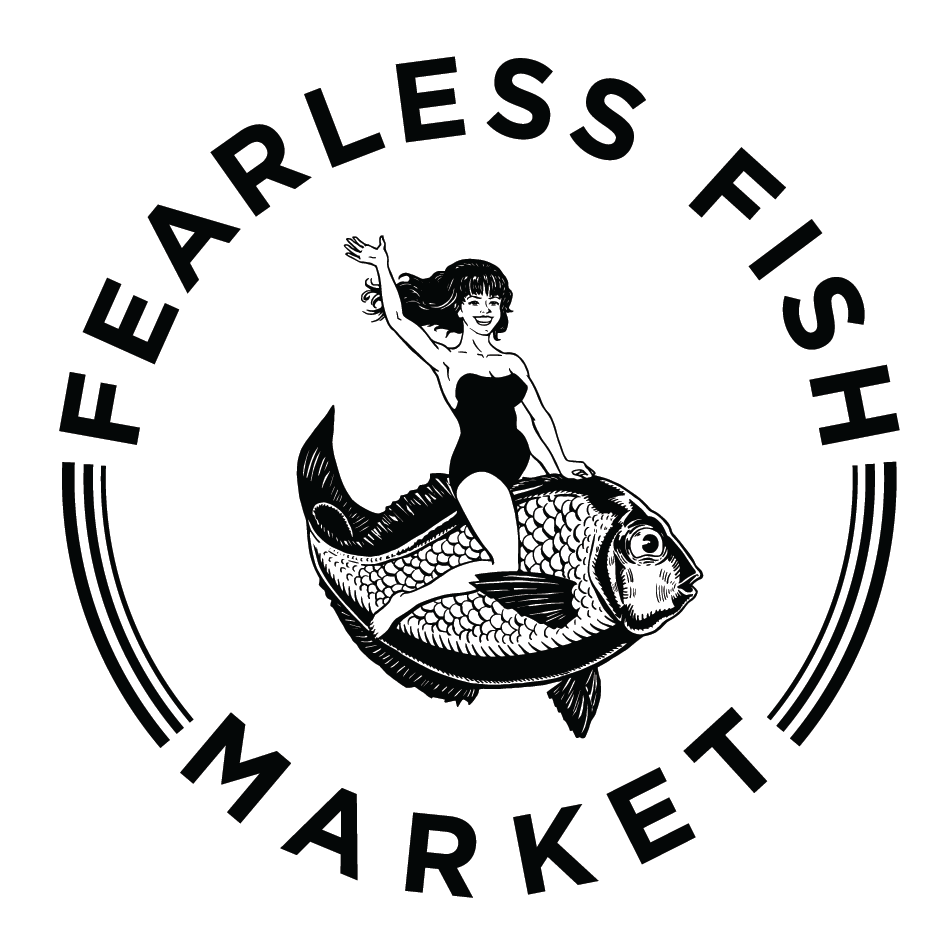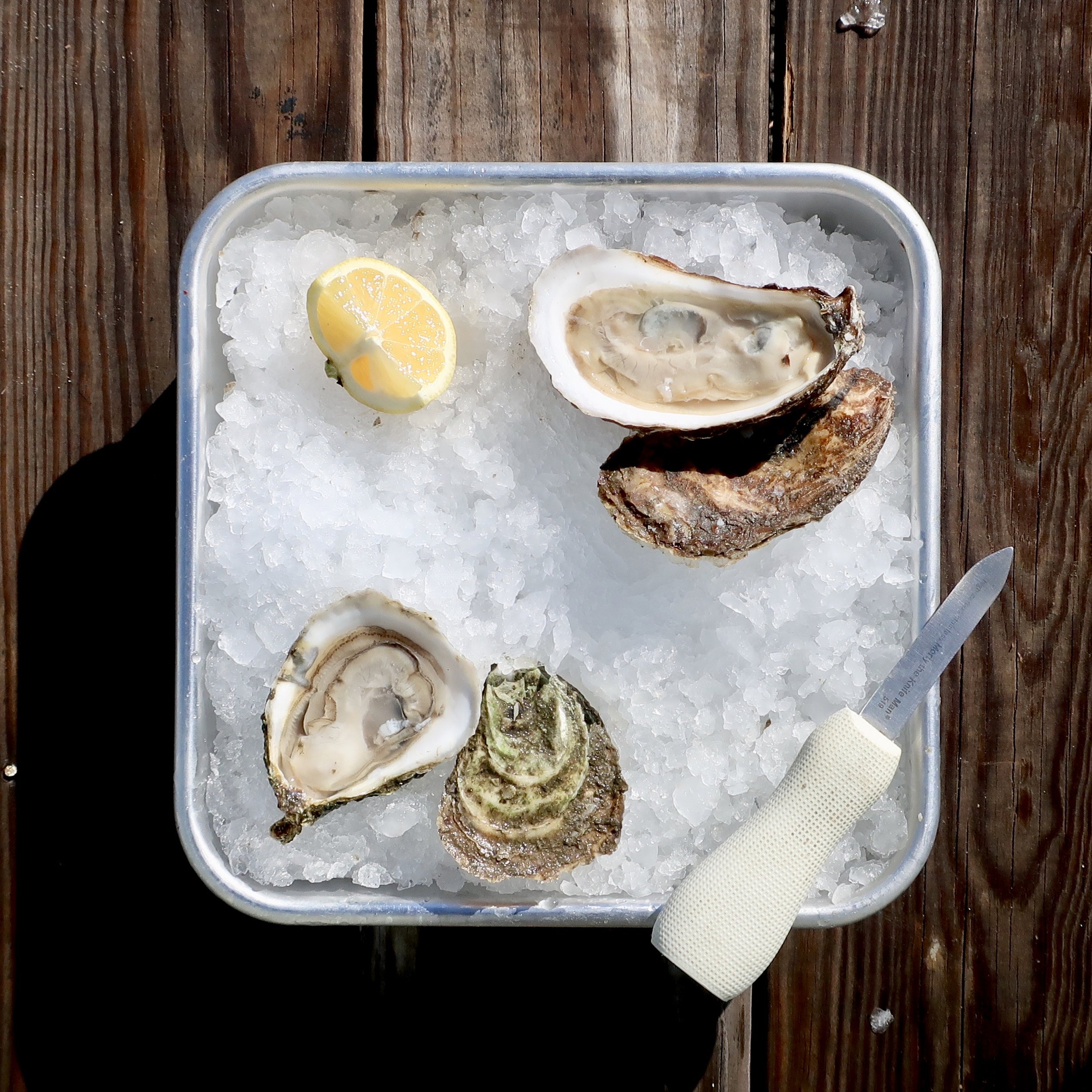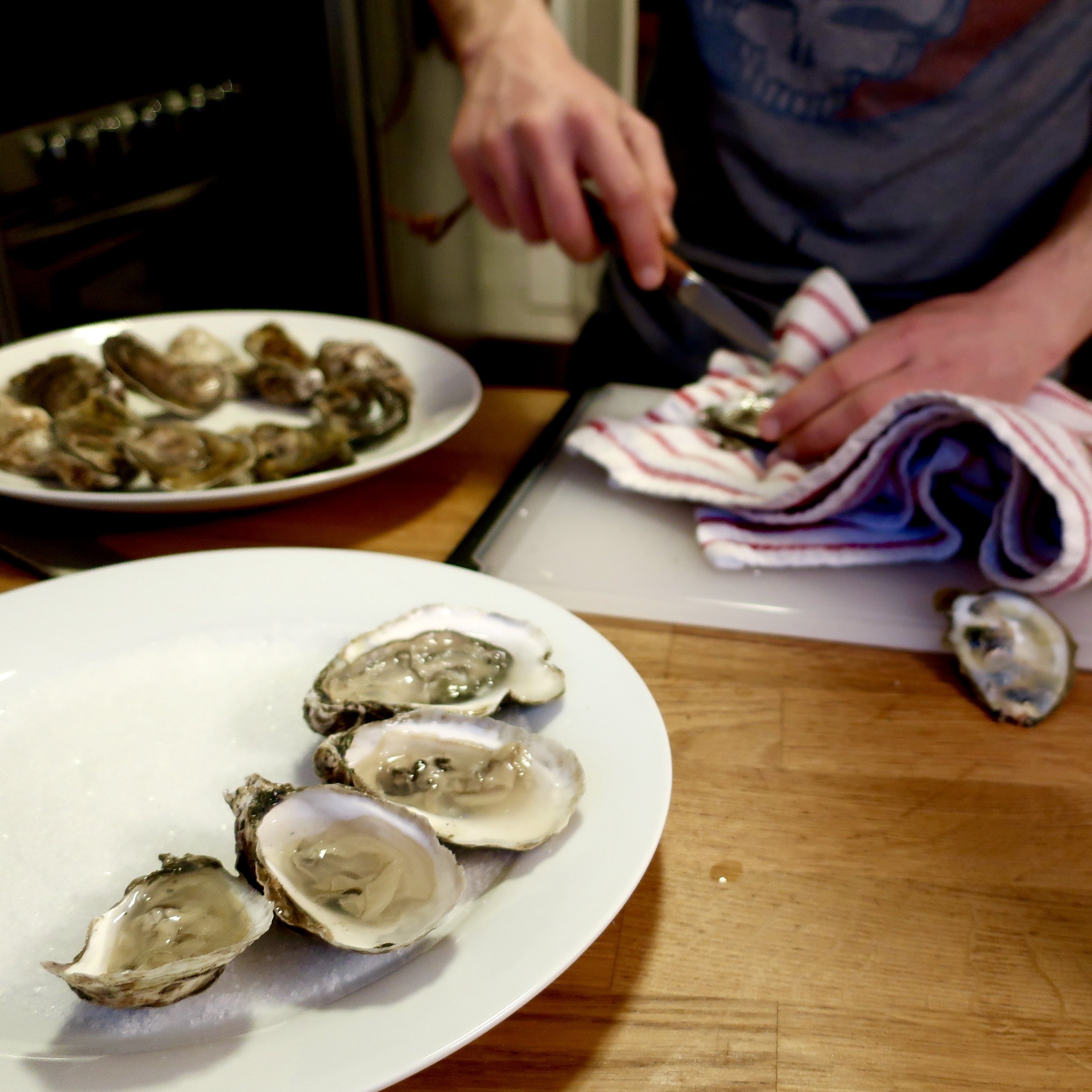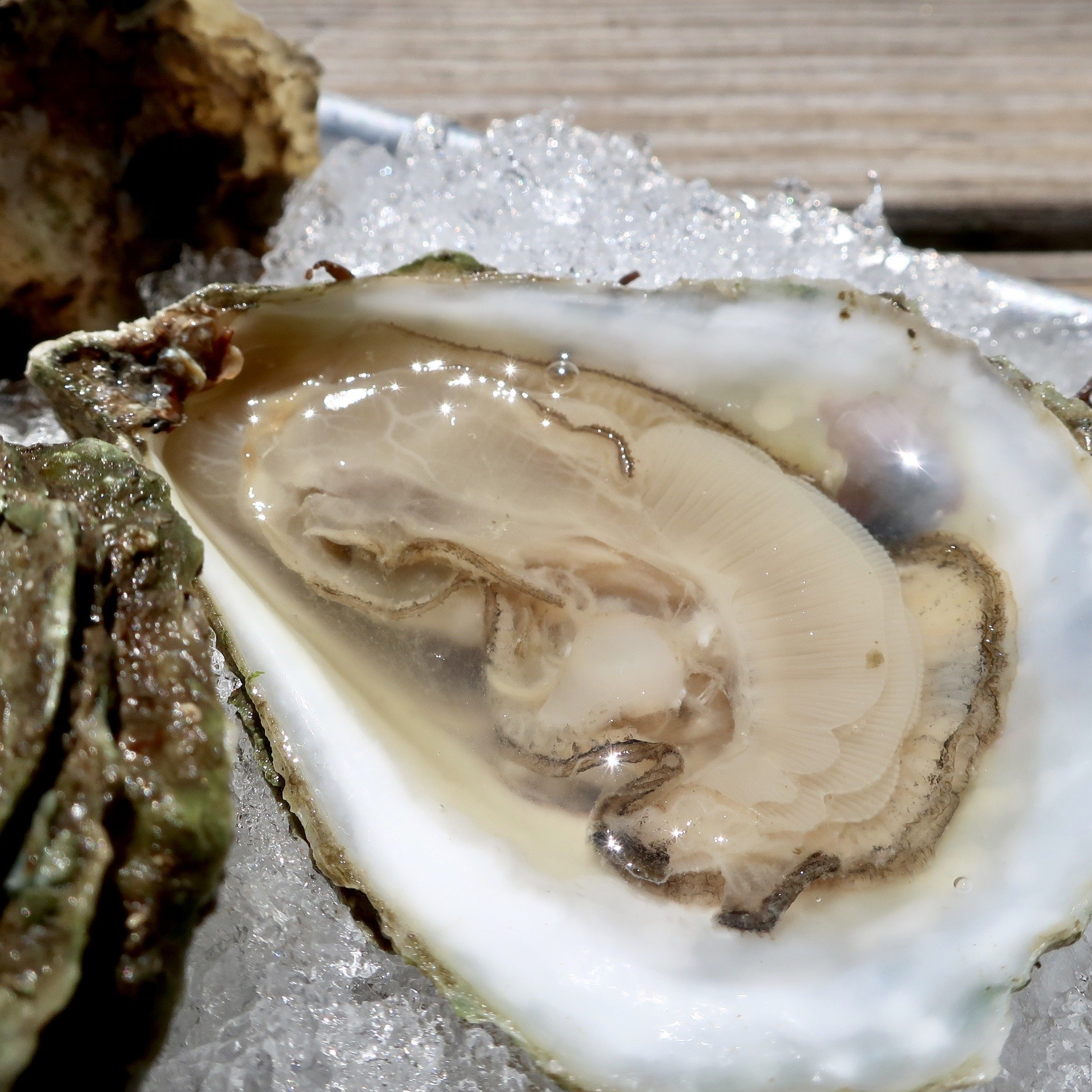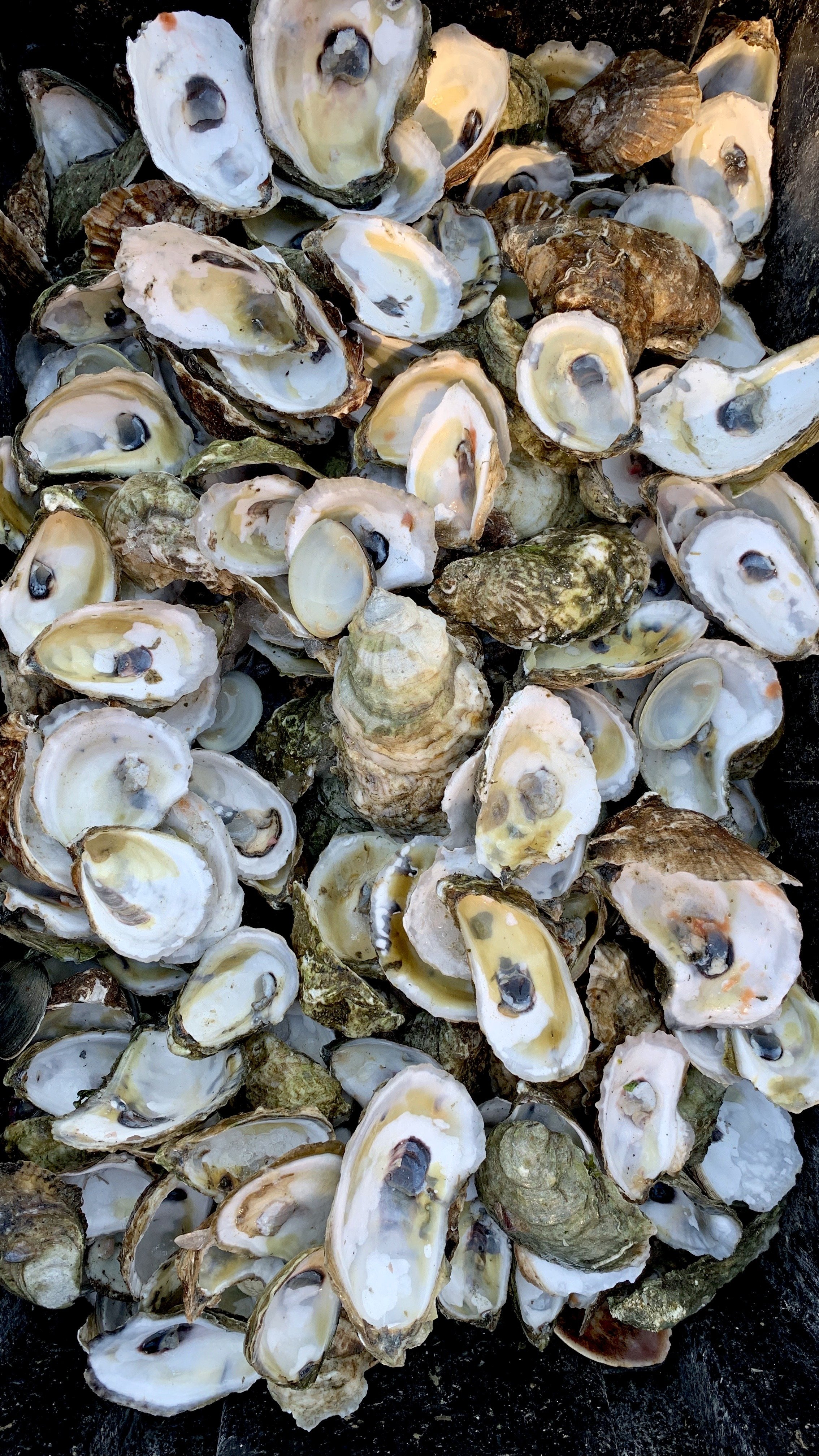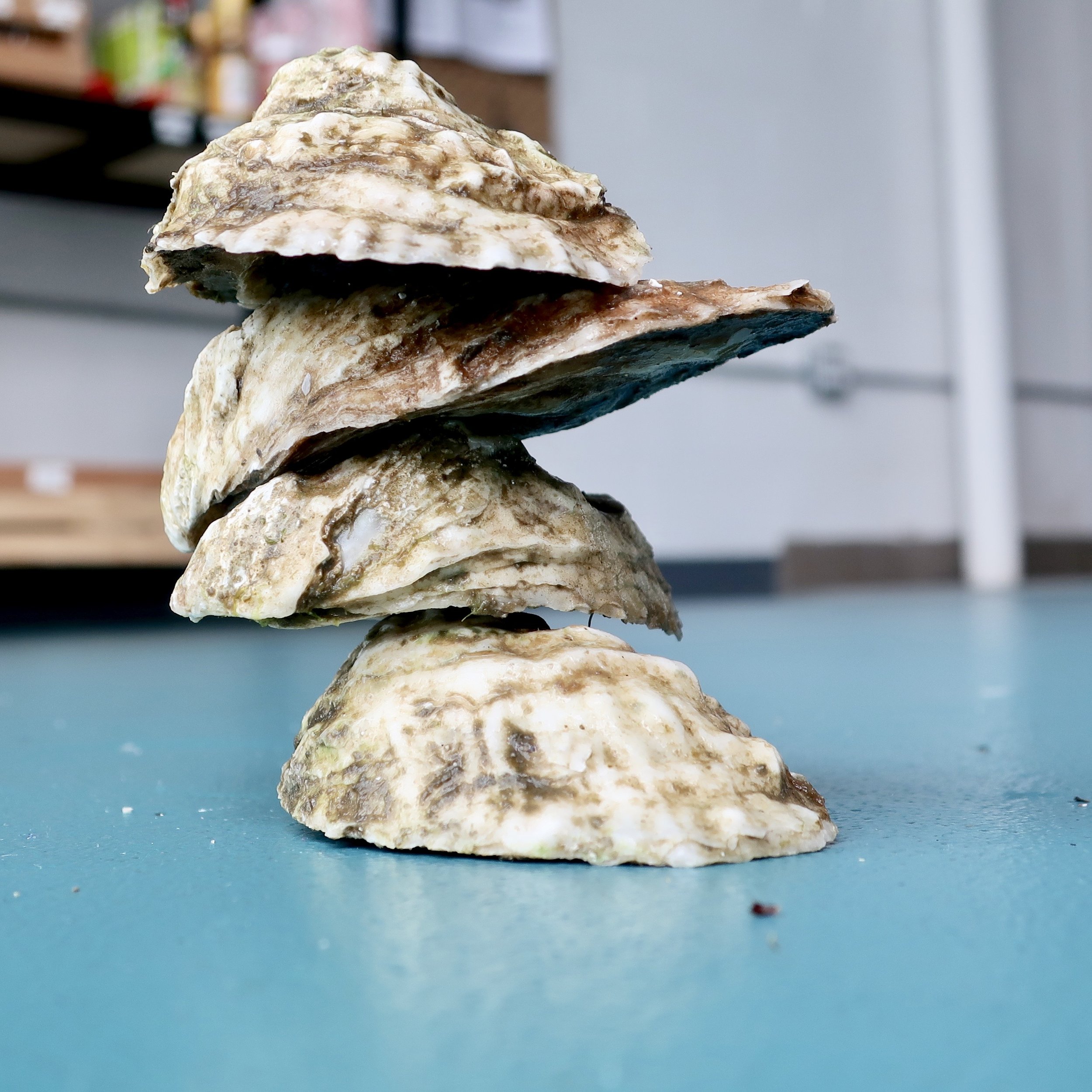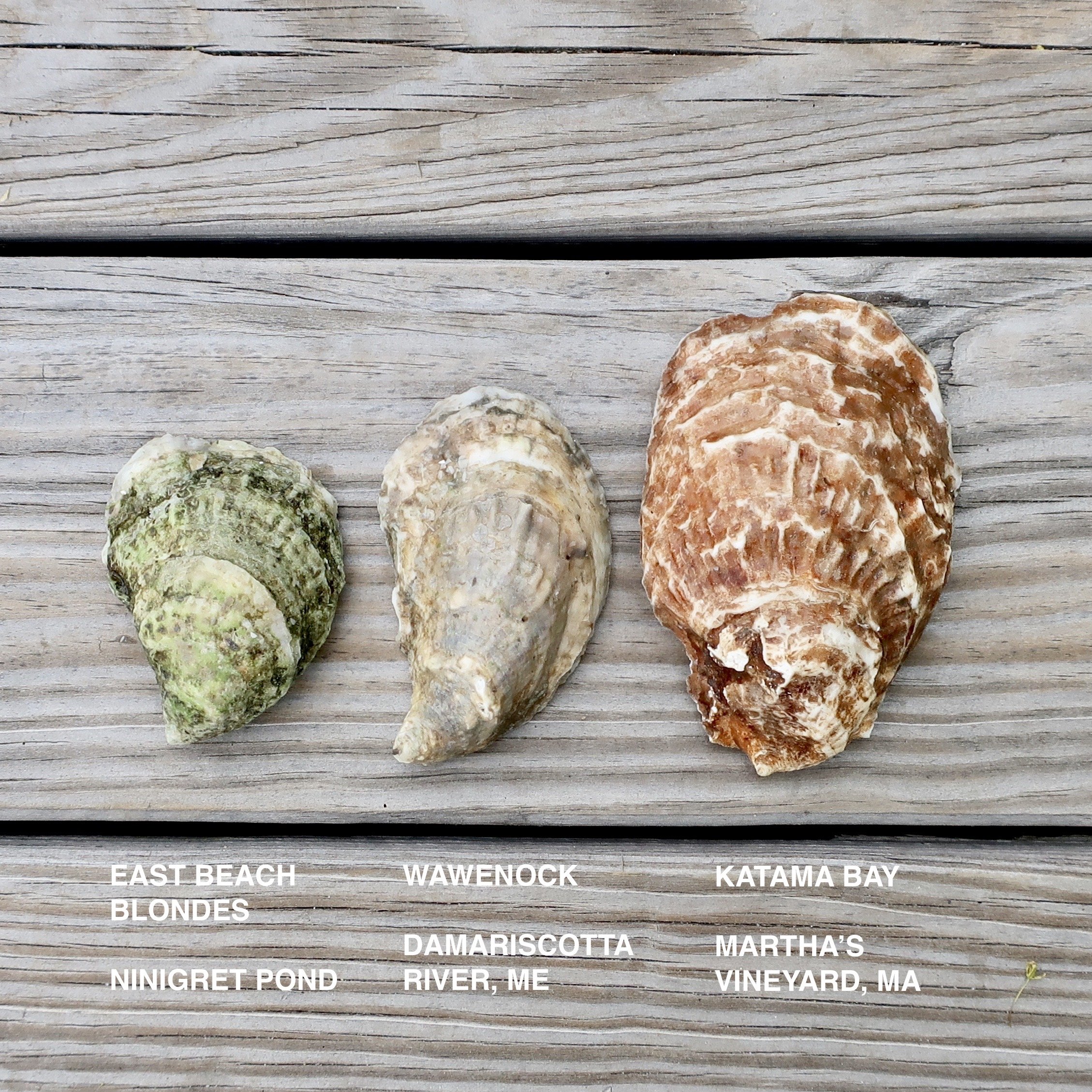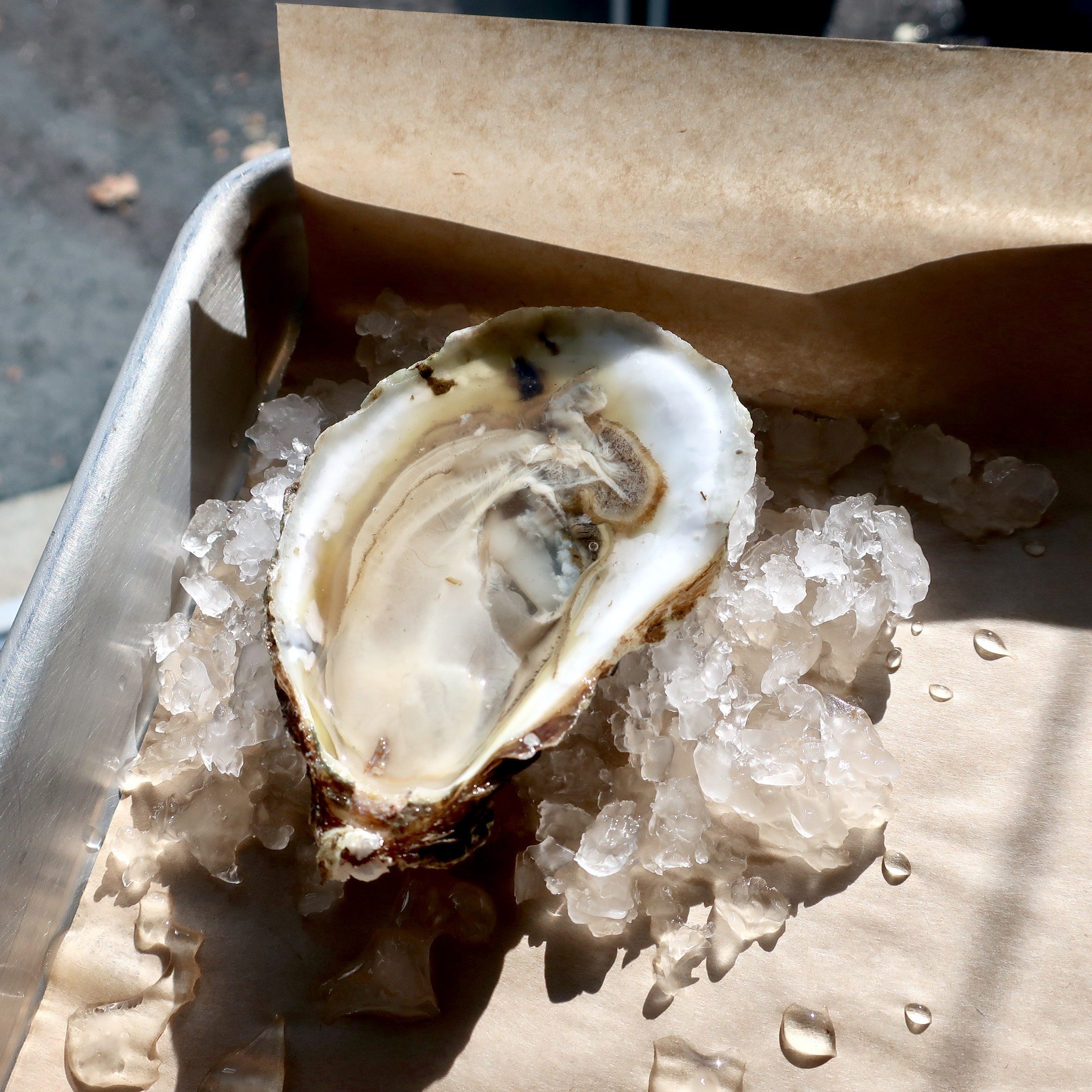Oysters
This page is for eating oysters raw. For the excellent but underrated grilling and roasting of oysters, please see the page on shellfish.
How to shuck an oyster
Fold a dish towel into a long, narrow “runway”
Place the oyster on the towel with the deep cup down and hinge pointing out in the direction of your dominant hand.
Place knife handle in center of your palm, cup your fingers around the handle.
Put tip of the knife into the hinge. If using a knife with a curved tip, the tip should be pointing upward.
Apply controlled pressure to get the tip of the knife slightly into the hinge.
Use the knife as a lever and push down to pop the ‘top’ shell off.
Insert knife into the oyster and twist knife to further separate the top shell from the bottom shell.
Place the knife flat under the top shell and above the bottom shell to separate the oyster from the top adductor muscle and shell.
Scrape the knife along the inside wall of the bottom shell to separate the oyster from the bottom shell adductor muscle.
Add a little lemon, a few drops of mignonette or some cocktail sauce (not endorsed by Fearless Fish) and slurp.
How to serve
Oysters tip easily, and are best chilled, so a bed of crushed ice is the best way to serve
To avoid oysters puddling in melted ice, use this tip from Cook’s Illustrated and put the ice over some sort of grate with a sheet pan underneath so the oysters remain suspended as the ice melts
If you can’t get your hands on crushed ice, you can use crumpled-up tinfoil
How to eat
In the nude
Squeeze of lemon
This mignonette: Combine one finely chopped shallot, a half-cup of red wine vinegar, one teaspoon pepper and a tablespoon of finely chopped parsley
Oyster etiquette
When you are done, return the shell to the serving dish, placed upside down so that the outer shell is showing.
Who shouldn’t eat oysters
Oysters were the only seafood Stu wouldn’t let his wife eat during pregnancy due to the rare but dangerous Vibrio. Similar caution should apply for those who are immune-compromised.
What to taste for
Below are a few of our favorite oysters that we tend to have in the shop on a consistent basis. We choose oysters that are grown with a straight hinge and strong shell for easy shucking. We also look for good deep cups to ensure good liquor content. Check it out for the flavor profiles and info that describes why they taste how they do.
Rhode Island has two main types of oysters - those from South County salt ponds and those grown in Narragansett Bay. Broadly, oysters out of the Bay tend to be brinier with a sweeter finish and oysters from the pond tend to be less briny with a more umami finish.
An ideal raw bar appetizer would include a pond oyster, a bay oyster and a few raw littlenecks.
Check out Oysterology for more info on different kinds of oysters.
We usually try to have at least one of each type of oyster (pond and bay) in the case daily.
POND OYSTERS
Quonnie Rocks
Flavor Profile - Moderate salt taste finished with a rich umami aftertaste.
Harvest Location – Quonochontaug Pond, Charlestown, Rhode Island
Grower – Nick Papa
Growout Method – Floating cage nursery system, tray and bottom culture for final grow out.
Flavor Influenced By: Quonnie Pond is the saltiest of all of RI’s coastal lagoons.
Salinity – 30 ppt
Tides & Currents – 3.0 foot tides
Bottom Makeup – sand and boulders
East Beach Blonde Oysters
Flavor Profile – Crisp brine with a buttery finish.
Harvest Location – Ninigret Pond, Charlestown, Rhode Island
Growers – Jim Arnoux, East Beach Farms, LLC & Nick Papa, East Beach Oyster Co.
Grow-out Method – Rack and Bag Nursery; tumbled, tray or bottom culture grow-out; harvested with bull-rakes.
Flavor Influenced By:
Salinity – 29 parts per thousand salinity
Tides & Currents – Small tides with some freshwater input
Bottom Makeup – Sand, gravel and mud
BAY OYSTERS
Sea-Kist Oysters
Flavor Profile – Full oceanic mineral saltiness with sweet finish.
Harvest Location – Dutch Harbor Jamestown, Rhode Island
Growers – Bill Cregan, Sea-Kist Aquaculture & Nick Papa, East Beach Oyster Co.
Growout Method – Floating bag system; tumbled to strengthen shell.
Flavor Influenced By:
Salinity – 32 to 35 ppt (full strength oceanic)
Bottom Makeup – Sand and gravel bottom make-up, near-shore 5 – 8 foot depth.
Hope Island Oysters
Flavor Profile – Strong mineral salt flavor with a rich creamy finish.
Harvest Location – West Passage, Narragansett Bay, Rhode Island
Grower – Andrew Smiley, Allen Harbor Oyster Co.
Grow-out Method – Rack & Bag system, tumbled grow-out for initiating shell thickness.
Flavor Influenced By:
Salinity – 32 to 35 ppt (full strength oceanic)
Tides & Currents – Significant tidal exchange in Narragansett Bay
Bottom Makeup – Sand and gravel bottom make-up
Dutch Island Oysters
Flavor Profile – Full oceanic mineral saltiness with sweet finish.
Harvest Location – West Passage, Narragansett Bay, Rhode Island
Grower – Mark Goerner, Jamestown Oyster Co.
Grow-out Method – Oyster-grow system, floating rack-n-bag; tumbled to strengthen shell.
Flavor Influenced By:
Salinity – 32 to 35 ppt (full strength oceanic)
Tides & Currents – Significant tidal exchange in Narragansett Bay.
Bottom Makeup – Sand and gravel bottom make-up.
West Passage Oysters
Flavor Profile – Full oceanic mineral saltiness with strong, sweet finish.
Harvest Location – West Passage, Narragansett Bay, Rhode Island
Grower – Graham Watson, West Passage Oyster Co.
Grow-out Method – Oyster-grow system, floating rack-n-bag; tumbled to strengthen shell.
Flavor Influenced By:
Salinity – 32 to 35 ppt (full strength oceanic)
Tides & Currents – Significant tidal exchange in Narragansett Bay
Bottom Makeup – Sand and gravel bottom make-up.

